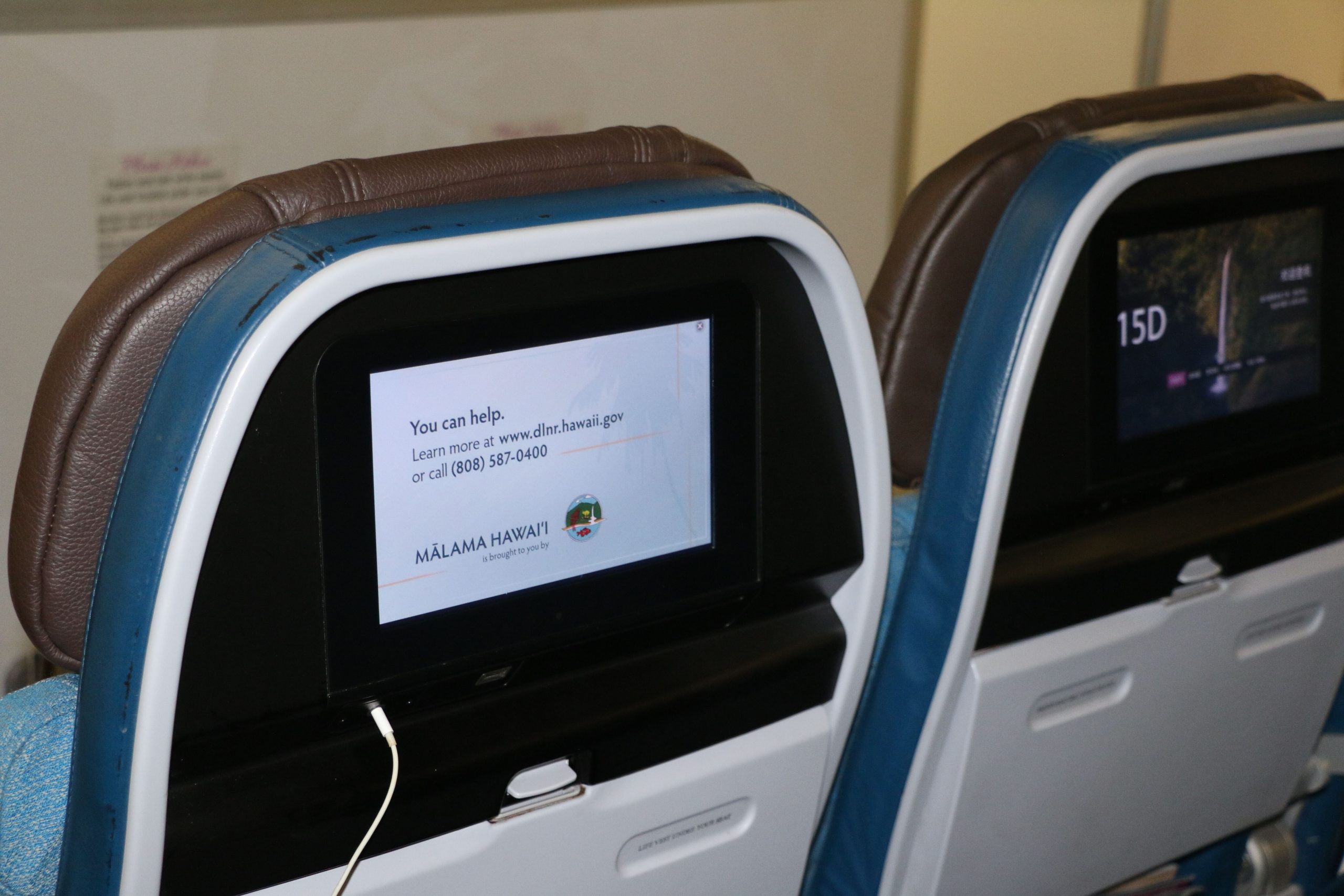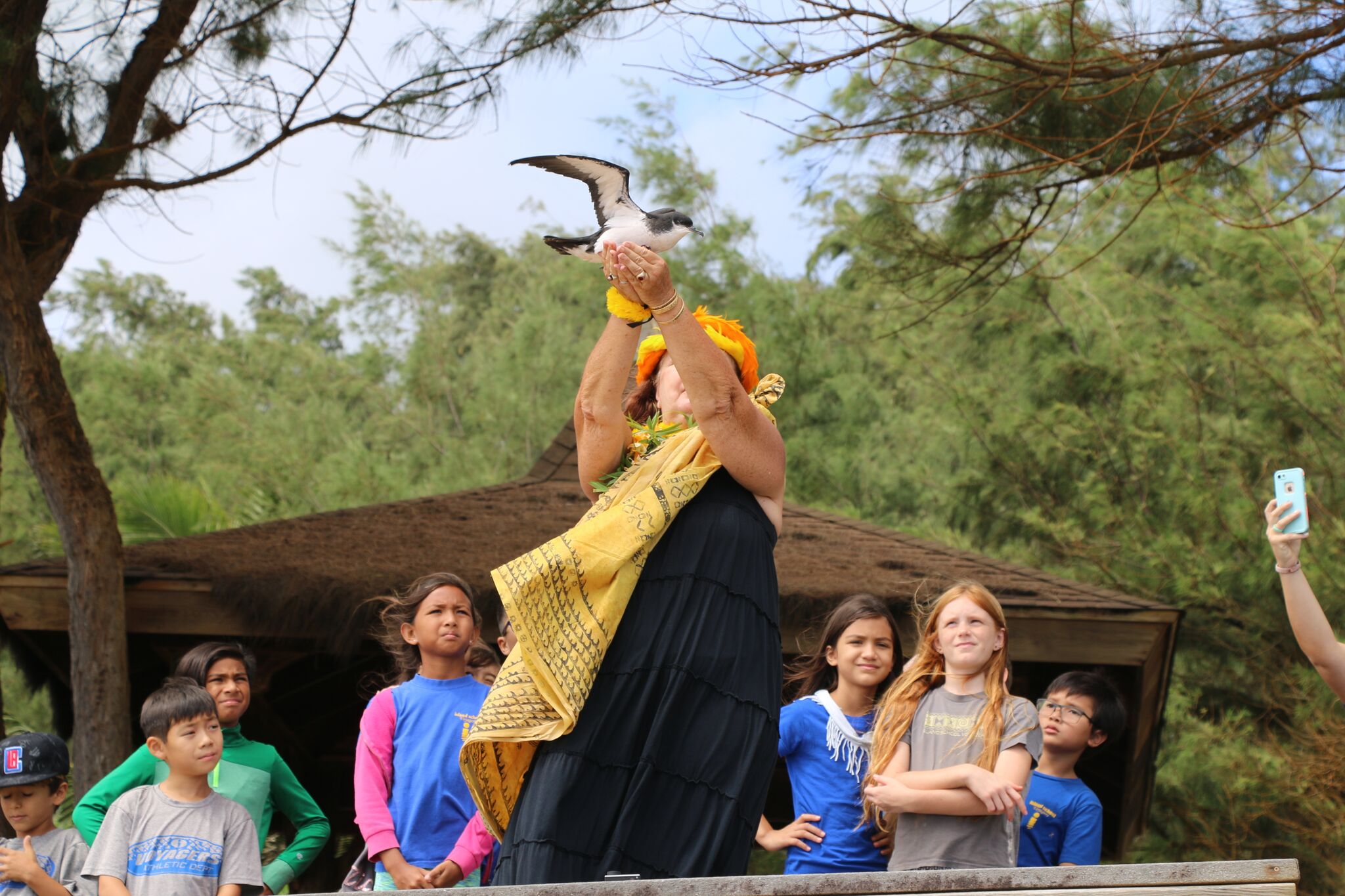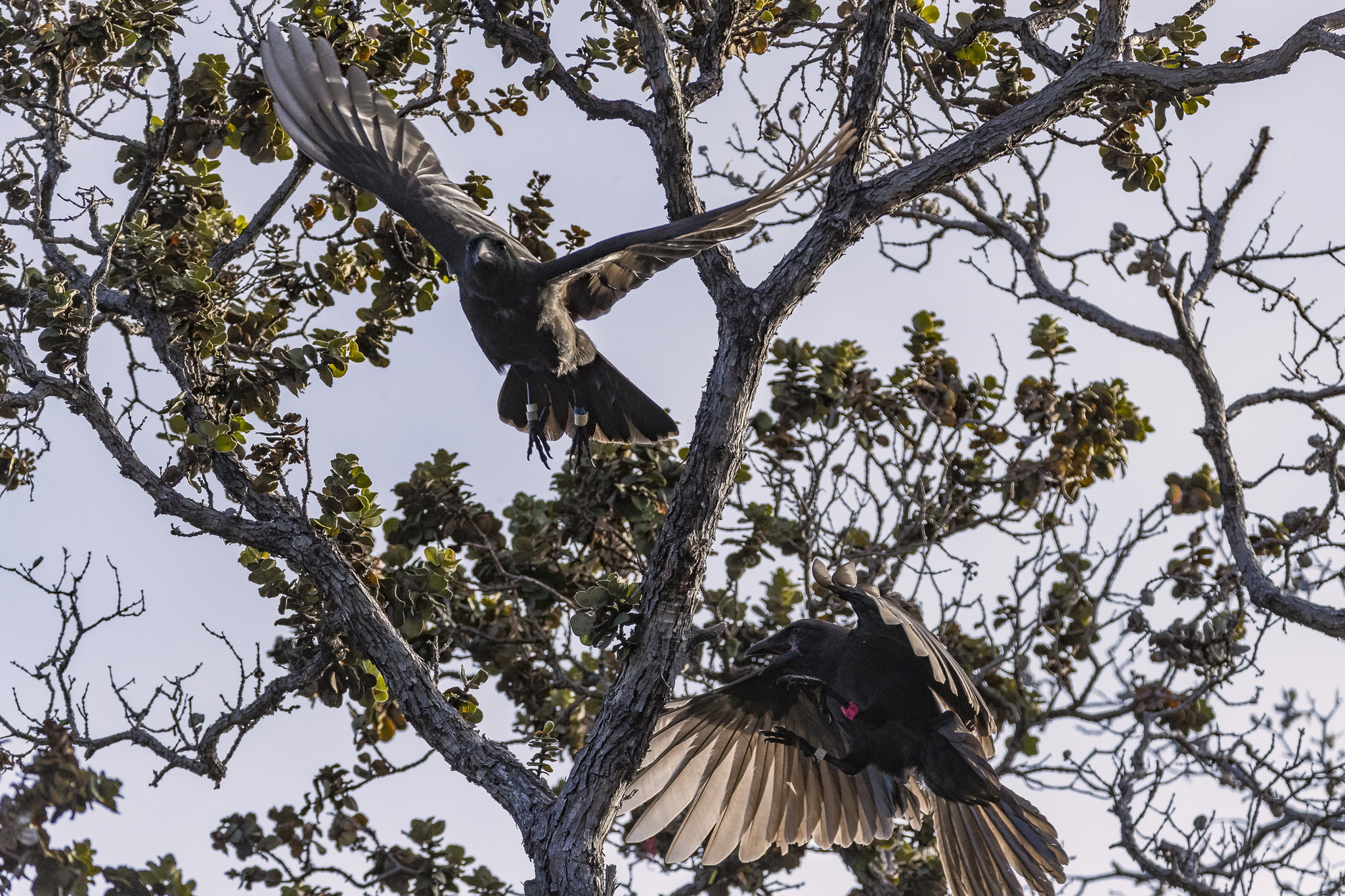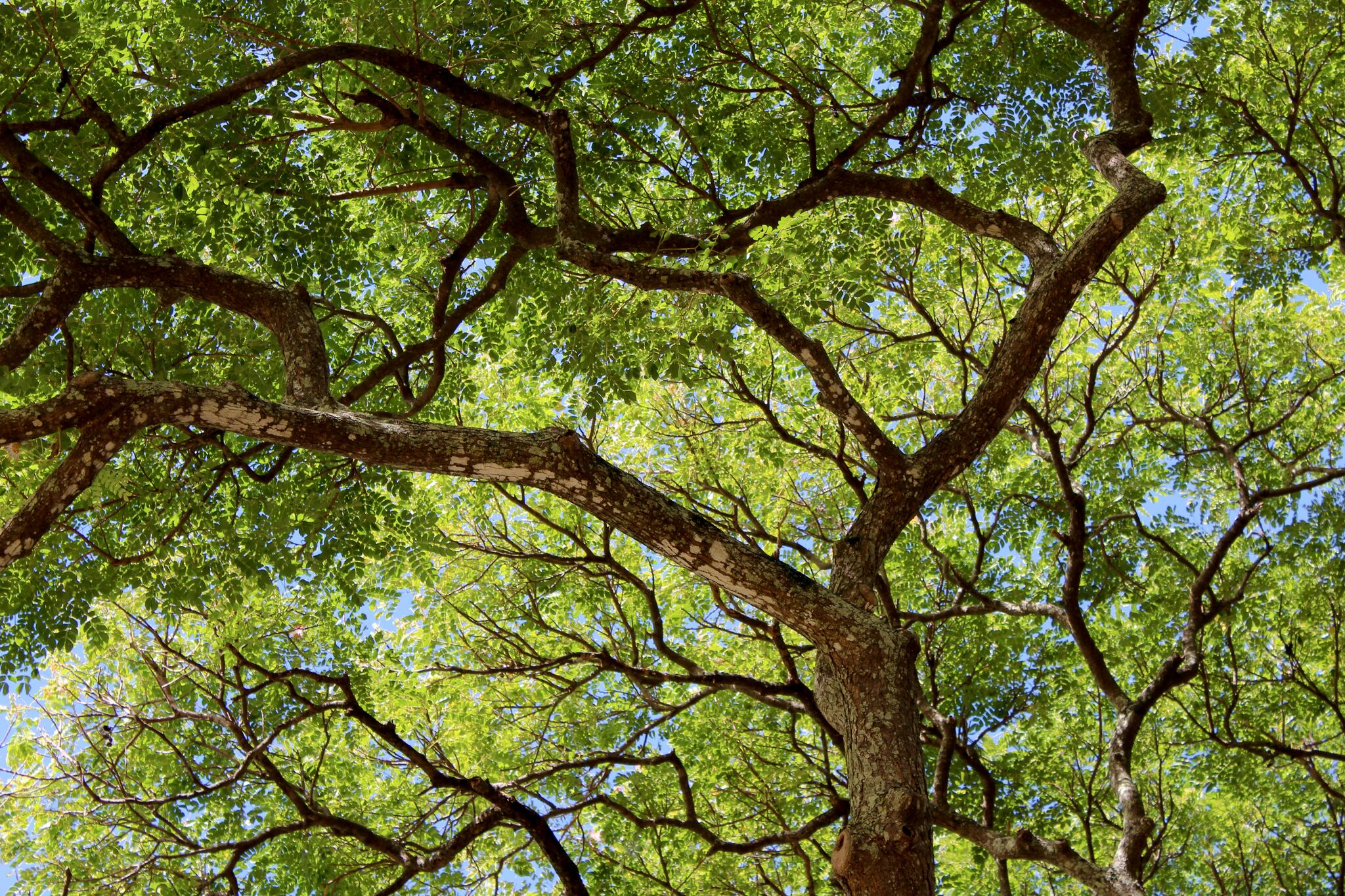(Honolulu) – In the coming days and months it’s going to be hard to avoid the phrase, “Mālama Hawai‘i," when flying, staying in a hotel room, watching TV or enjoying the outdoors throughout the Hawaiian Islands. DLNR and the Hawai‘i Tourism Authority (HTA) have partnered to launch Mālama Hawai‘i, a comprehensive campaign designed to educate and remind visitors and kama‘āina about being respectful of the islands’ natural resources, protecting wildlife, and staying safe at all times while in Hawai‘i.
Education
(Hilo) – Rapid ʻŌhiʻa Death (ROD), the fungal disease that’s impacted hundreds of thousands of acres of native ‘ōhi‘a forests in Hawai‘i, is the actual reason for the ʻŌhiʻa Love Festival today at the ‘Imiloa Astronomy Center. Now in its second year, more than a thousand people honored ‘ōhi‘a and the many people working to stop the spread of ROD and find effective treatments for it. The festival goes beyond the disease.
(Lihu‘e) – School children from Kalaheo Elementary School and Island School helped release ten fledgling ‘A‘o (Newell’s Shearwaters) over the last two days during the annual E Ho‘opomaika‘i ‘ia na Manu ‘A‘o (A Cultural Release of the Native Newell’s Shearwater) event at Lydgate Park. The young seabirds had been rescued by people then rehabilitated by Save Our Shearwaters (SOS). Before they started their journey back out to sea, Kupuna Maureen Fodale offered a pule (Hawaiian prayer).
(Kihei) -A wise old saying, an ‘olelo no‘eau, sums up what the staff at ‘Āhihi-Kina‘u (NAR) hope people will get out of its new information kiosk: Everybody paddles the canoes together; bail and paddle, paddle and bail, and the shore is reached (E lauhoe mai na wa‘a; i ke kā, i ka hoe; i ka hoe, i ke kā; pae aku i ka ‘āina).
Five young ‘alalā, two females and three males, were released into Pu‘u Maka‘ala Natural Area Reserve (NAR) on the Island of Hawai‘i on Wednesday, October 11th. This second group of birds joins a previous group that had been released into the forest at the end of September. These eleven birds represent what conservationists hope will be the beginning of a recovered population of the endangered crow species on the island.
The recent project aimed at eradicating invasive rats from the State of Hawai‘i’s Seabird Sanctuary on Lehua Island is the subject of a half-hour long TV documentary that chronicles the operation from beginning to end. Scheduled for broadcast on KFVE-TV (K5) on Saturday, Oct. 21st and Sunday, Oct. 22nd at 9:30 p.m. and 6:30 p.m. respectively, the program was produced by DLNR with support from the Lehua Island Restoration Steering Committee; the group of government agencies, non-profit and community organizations, and other supporters involved in the eradication of rats.
The Department of Land and Natural Resources, Division of Forestry and Wildlife’s Kaulunani Urban and Community Forestry Program is bringing its successful and unique Citizen Forestry Tree Inventory Program to the Honolulu ahupua‘a of Waikiki. The program, which begins training in mid-October, seeks volunteers to become Citizen Foresters and help gather valuable data about Honolulu’s urban trees that contributes towards improved management of these important community assets.
Over $1.1 billion– that’s how much federal funds were made available to states in 2017 for wildlife and sport fish restoration programs. Over $8.1 million alone was made available to Hawaii in 2017! The source of these funds: the Pittman-Robertson (1937) and Dingell-Johnson (1950) Acts administered through the U.S. Fish and Wildlife Service’s Wildlife and Sport Fish Restoration Program: https://wsfrprograms.fws.gov/. These Acts impose federal excise taxes on the sale of firearms, handguns, ammunition, archery equipment, fishing tackle, yachts and pleasure craft. Revenue from these taxes goes right back into state wildlife agencies, like the Department of Land and Natural Resources (DLNR) in Hawaii, for wildlife and sport fish restoration projects, education, and shooting range development.
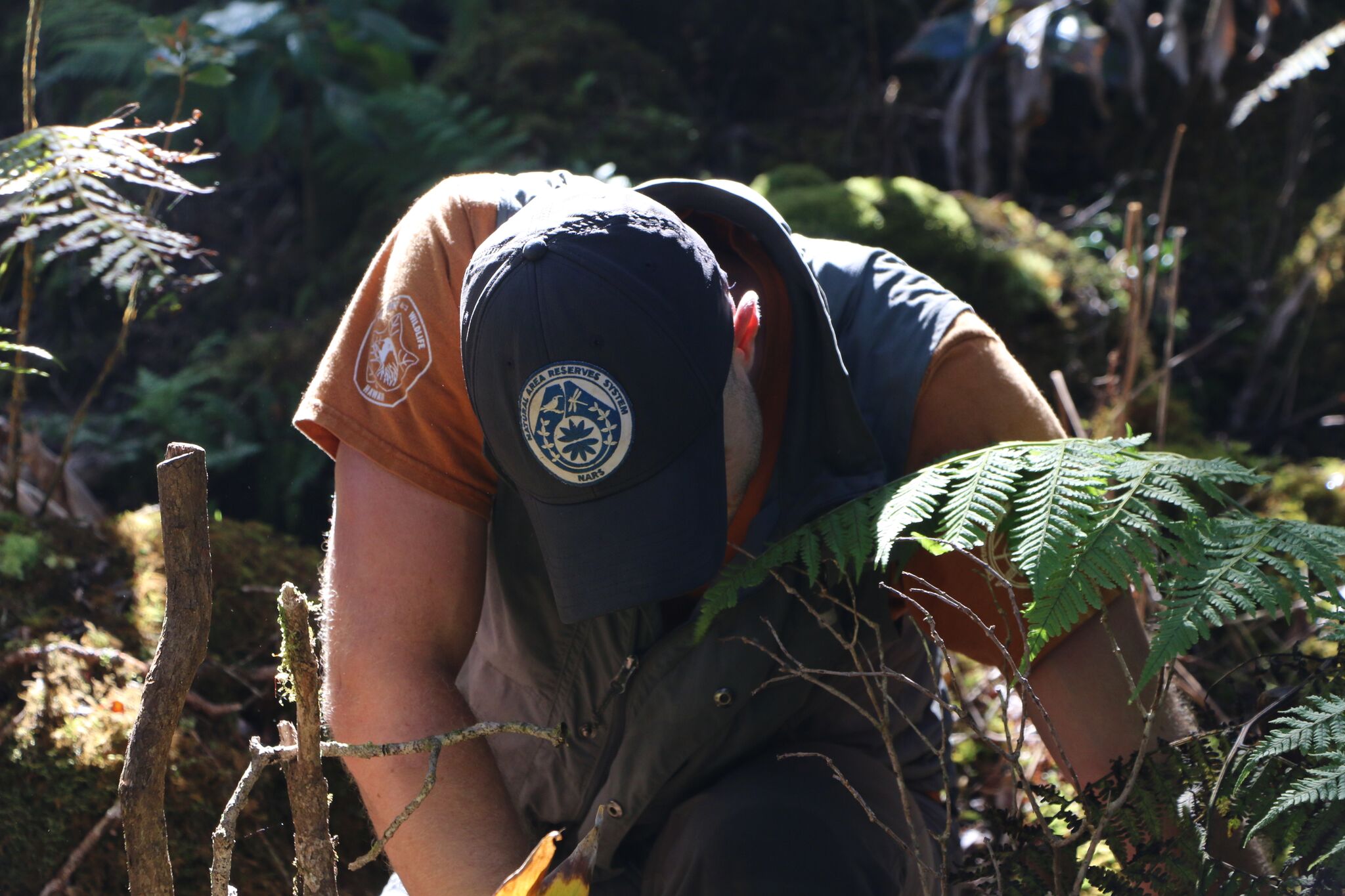
07/24/17 – Extensive Trapping of Rats and Wild Cats Improves Survival Chances of Endangered Seabirds
This Natural Area Reserve (NAR) is prime breeding and nesting area for the critically endangered Hawaiian Petrel and Newell’s Shearwater. A recent analysis of long-term radar studies on Kaua‘i revealed massive declines in populations of endangered seabirds here. The study showed that between 1993 and 2013, populations of the ‘A‘o (Newell’s Shearwater) declined by 94% and Ua‘u (Hawaiian Petrel) by 78%. In addition to the threats from introduced predators, Kaua‘i’s endangered seabirds are under threat from a whole suite of issues, including powerline collisions, light attraction and invasive plants – as well as threats at sea which could include overfishing, by-catch and the effects of climate change.
With 75,000 acres of Hawai‘i island ʻōhiʻa forest now showing symptoms of the fungal disease known as Rapid ‘Ōhiʻa Death, federal and state agencies and non-profit partners are using an array of high technology to detect its spread. “The battle against the two types of Ceratocystis fungus that causes Rapid ‘Ōhiʻa Death has always been a hugely collaborative effort,” said Rob Hauff, State Protection Forester for the DLNR Division of Forestry and Wildlife (DOFAW). “Now,” Hauff explained, “the collaboration between the agencies and organizations engaged in the fight against this devastating disease not only continues, but is expanding, particularly on the detection front.” Early detection is considered critical in helping to identify Rapid ‘Ōhiʻa Death’s spread on the Big Island and to other islands and to provide data and scientific information to aide researchers working hard to find a way to stop it.
